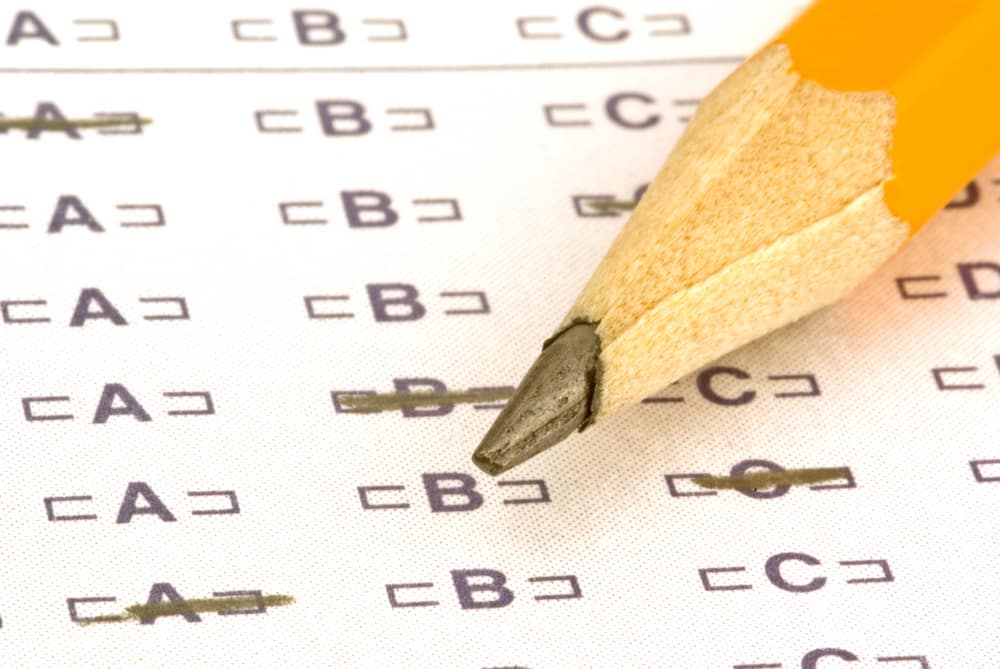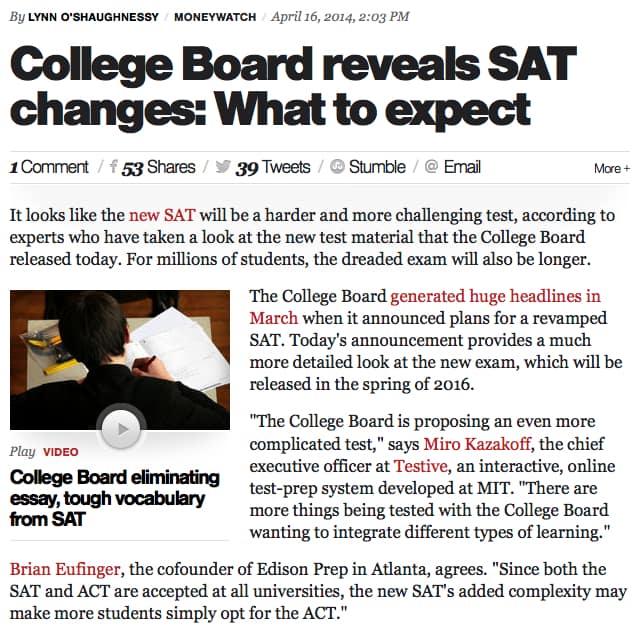
In case you missed it, the College Board recently released many more details about its planned revision of the SAT test. You can see what’s in store at the College Board’s website dedicated to the SAT changes that are slated for the spring of 2016: DeliveringOpportunity.org.
I wrote a post for my college blog at CBS Moneywatch last week about some of the upcoming changes and below you’ll see a screen capture of the top of that story.

Read Rest of the Story
You can read the rest of my CBS Moneywatch story by clicking this link: College Board reveals SAT Changes: What to Expect
The ACT vs. SAT
Because the SAT will be a more challenging test, you might assume that more students will be tempted to take the ACT. Brian Eufinger of Edison Prep, however, noted that the SAT still enjoys one huge advantage over its competitor: SAT superscoring.
The vast majority of colleges and universities in this country superscore the SAT. That is, if a student takes the SAT more than once, schools will cherry pick the best verbal, math and 
Unlike the College Board, the ACT discourages schools from superscoring its test and consequently a small percentage of institutions have embraced this scoring method.
“The SAT’s main advantage going forward will remain what it is today: the vast majority of schools superscore,” Eufinger observed. “Were the ACT to ever attempt to change that, the SAT market share would drop even faster than it has been. Our students’ initial reactions upon receiving the new format of SAT questions on the March SAT’s experimental section, and their desire to not write twice as long of an essay as they do today, would drive many of them into the arms of the ACT if such a change in superscoring recommendations for the ACT occurs.”
More Thoughts on the SAT Changes
Here are a few more observations from Eufinger at Edison Prep:
Test Length and the new “Optional” Essay

Also, students who have taken AP History coursework will be at quite an advantage on the new essay, given the similarities between the document-based question format that AP History uses and the structure of the new SAT essay.
Math Changes
The math timing is much more generous on the new SAT than the existing ACT (60 questions in 80 minutes vs. 60 questions in 60 minutes). If students can learn mental math and quick estimation techniques for the new no-calculator section, that extra 33% time per question on the SAT will be very meaningful. The calculator is still allowed on 65% of the new SAT’s math questions, although students who are overly calculator-reliant may still gravitate to the ACT.
Which Test is Coachable
Until a full practice test is released, it will be difficult to say which test will be easier and/or more coachable. Even then, the score conversion grids between the new SAT, current SAT, and existing ACT are not likely to be released for 2-2.5 years. We imagine that many students in the Class of 2017 will opt to take the current SAT and deal with the ‘devil they know’ before the Spring 2016 overhaul.
Learn More…

Until a full length PDF with actual confirmed timing for each section is posted, it’ll be hard to know for sure which test is easier/harder, etc.
Hopefully they make a free full-length PDF available online soon, like they currently do (e.g. this one: https://satonlinecourse.collegeboard.org/SR/digital_assets/assessment/pdf/0833A611-0A43-10C2-0148-CC8C0087FB06-F.pdf)
One would hope that the College Board would share practice tests with high school Math and English teachers, But that’s wishful thinking.